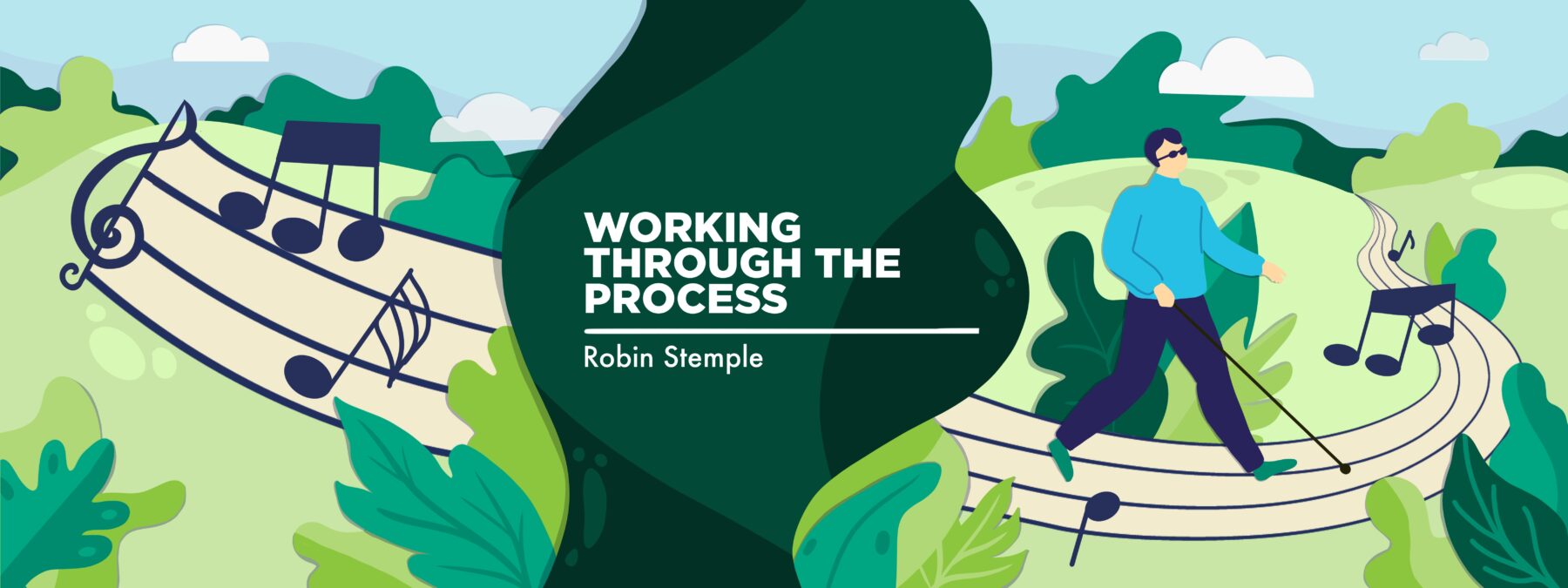Walking the tightrope, falling off, and getting back up again
Finding balance in life with FSHD isn't easy, but all we can do is keep trying

Years of living with facioscapulohumeral muscular dystrophy (FSHD) have taught me that it’s a balancing act on a high wire. It’s an everyday challenge to keep from falling off one way or another. Overdo it and you spend a day or two paying the price with pain and fatigue. Limit your activities and you feel less pain and fatigue, but you pay the price with muscle atrophy and the depressing feeling of uselessness.
On a recent Sunday, my wife and I returned to Somerset County, Pennsylvania, where we moved from a few months ago. It’s about a two-hour drive from our new home in Pittsburgh, so we left early to be on time for a 9:30 a.m. church service, where we’d be presenting an award on behalf of our church conference. After the service, we had lunch with old friends.
I’m committed to playing piano for Shanksville-Stonycreek High School’s baccalaureate service at the end of May. I also promised to play for a wedding at our old church that’s coming up in July, so after lunch, we headed to Shanksville to rehearse with the church music group. The rehearsal went well, but I was feeling fatigued. I knew there would be a price to pay.
We headed back to Pittsburgh, where I spent the evening just resting. I was hoping the evening of relaxation would be enough to avoid the worst effects of overdoing it. When you have FSHD, trying not to overdo things is a way of life. Sad to say, the evening rest wasn’t enough.
Monday wasn’t a good day. I woke up to a familiar pain radiating down from my neck to a spot between my shoulder blades. I’ve been feeling that pain for 50 years. It’s an old, familiar friend, but it used to take a lot more activity to get it started.
I was also experiencing some newer aches and pains that have just started showing up in the past decade or so. It was a struggle to get out of bed. My right hip simply didn’t want to work, and my legs hurt from top to bottom. Pushing up with my arms didn’t produce much lift, but it sure amped up the pain.
My lower back was twitchy after a couple hours on the piano bench with no back support.
I was pretty much forced to do what I always do when I overdo things. I took a couple ibuprofen and sat on my old recliner. The recliner’s like me — kind of old, broken down, and dilapidated — so we fit together well. I got my arms into a position where they were as fully supported as possible to reduce the pressure on my shoulders. Then I just waited it out. I spent the day reviewing some materials for committees I’m on, listening to books, and talking to friends on the phone, but little else.
By Tuesday morning, my neck and shoulders were back to normal. They weren’t working well, but they weren’t causing too much pain, either. I felt the normal twinge from my hip when I got out of bed. My back was fine. There was just some minor achiness in my legs. If my doctor had asked, I would say my pain level was down to a 3 out of 10. That’s about typical for me.
Finding my balance
I’m in a unique situation. Since I just moved to Pittsburgh, I don’t have the busy schedule I had before the move. The dilemma I face is how much to push to add things to my schedule. I love playing music at nursing homes, as they’re always an appreciative audience, but I know I can’t go back to playing three or four days a week.
As always with FSHD, finding that sweet spot of the perfect level of activity is going to be difficult. I know it will be less than what I used to do, but how much less?
I’ll be taking a strategic approach to finding that perfect balance point. I’ll add activities to my schedule but try to space them out, so I have time to recover. I know I can’t pack as much as I used to into a single day.
Unfortunately, I also know that just about when I think I’ve found that perfect balance point, FSHD will start shaking that wire, trying to knock me off. It probably will, but I’ll be getting back up and giving it another shot. That’s all we can do, right? At least there’s no milk on the floor!
Note: Muscular Dystrophy News Today is strictly a news and information website about the disease. It does not provide medical advice, diagnosis, or treatment. This content is not intended to be a substitute for professional medical advice, diagnosis, or treatment. Always seek the advice of your physician or another qualified health provider with any questions you may have regarding a medical condition. Never disregard professional medical advice or delay in seeking it because of something you have read on this website. The opinions expressed in this column are not those of Muscular Dystrophy News or its parent company, Bionews, and are intended to spark discussion about issues pertaining to muscular dystrophy.








Leave a comment
Fill in the required fields to post. Your email address will not be published.